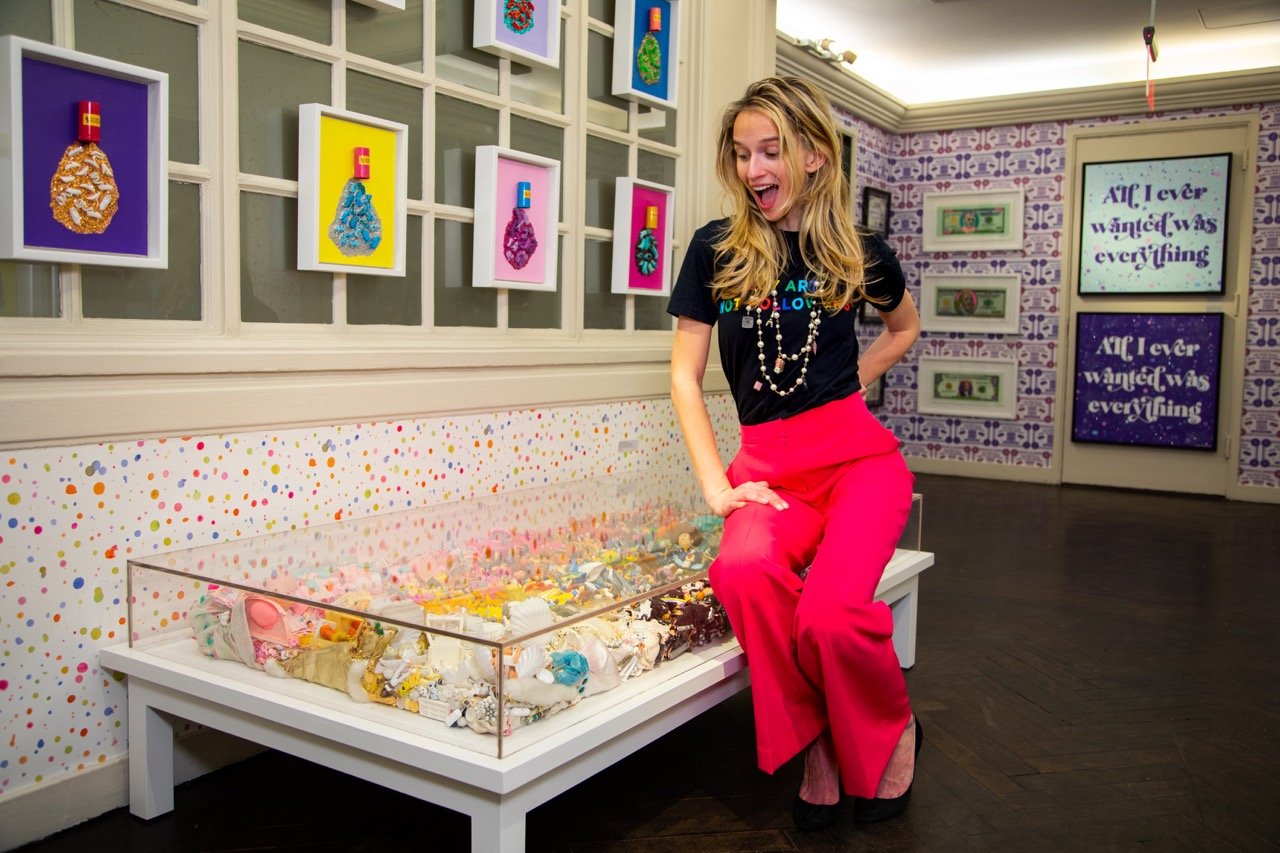“I’m Not Your Toy” Table
DIMENSIONS: 61(h) x 30(w) x 18(d)
MEDIUM: Original Mixed Media Acrylic Coffee Table
YEAR: 2022
“In a world uprooted, is it any wonder that we find ourselves turning to childhood nostalgia for a daily dose of magic, mystery and whimsy of the past?”
Simmons took comfort in re-discovering childhood figurines that were put into storage well before the global pandemic. Unable to imagine the future, throwback ephemera can be an escape from our daily information overload. The surprise toys from a Happy Meal, collectible figurines unwrapped at holidays, the thrill of a goody bag at a friend’s birthday - as a child these moments elicit feelings of delight unparalleled to any adult experience. As a result of climate change, social unrest, a sense of looming apocalypse - we return to the past. After all, the etymology of nostalgia comes down to a painful desire to return home…to our childhood.
“If we can understand the impulse behind our desire for nostalgia, we can use it to recognize who we are, rather than longing for how we were.”
Our formative years are made of building blocks that eventually form our adult personalities, or what we eventually “bring to the table.” Thinking about her own personal foundation, Simmons wanted to create a functional table with a rainbow amalgamation of her toy memorabilia encased in an acrylic box, as if frozen in time. ‘I’m Not Your Toy’ suggests some glimpses into the past can promise not only a measure of reassurance / an escape from present woes, but also that looking back can simultaneously be a way forward. If we can understand the impulse behind our desire for nostalgia, we can use it to recognize who we are, rather than longing for how we were.


















